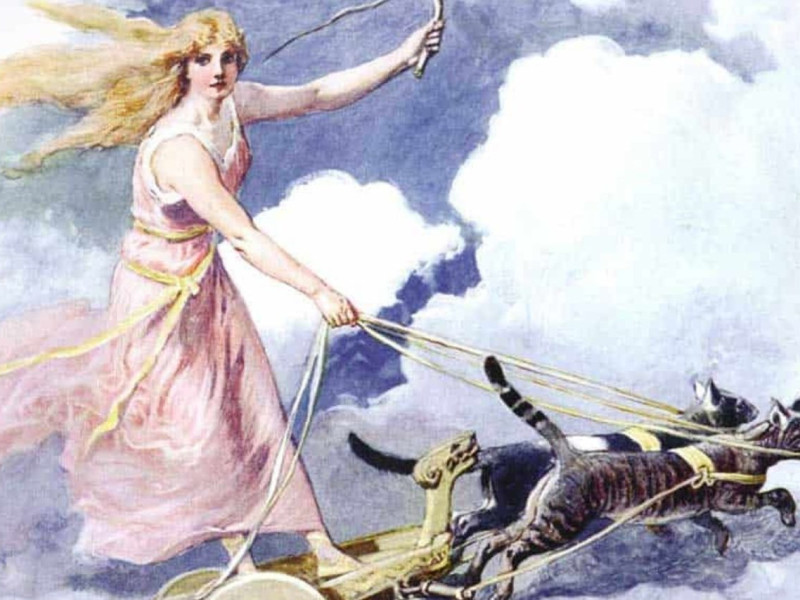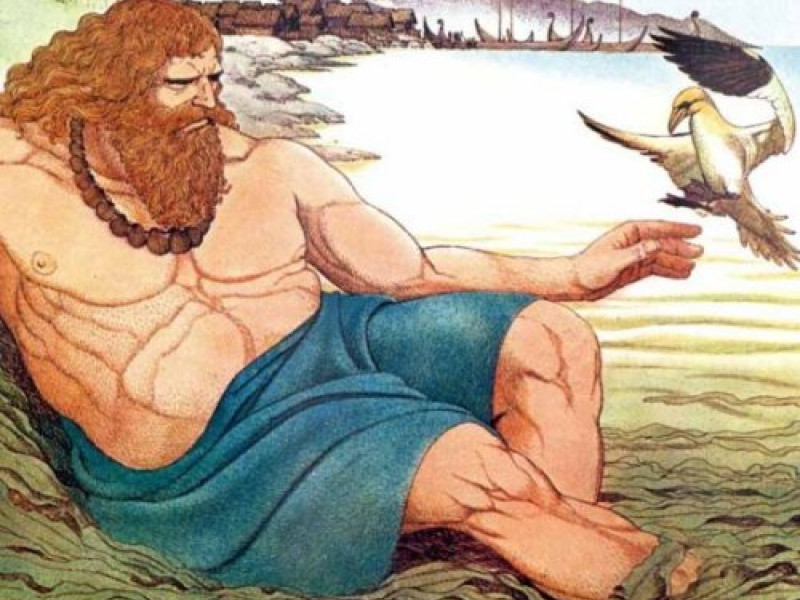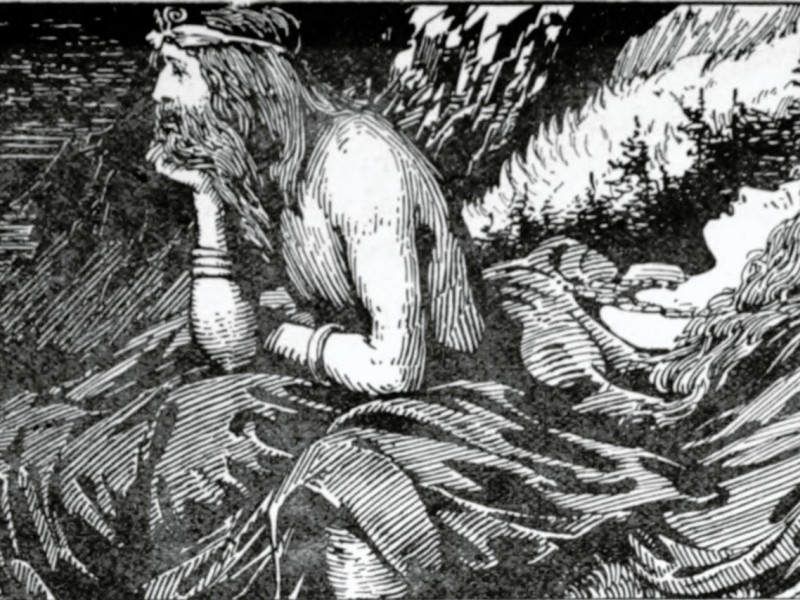Nerthus
Nerthus: Mother Earth Goddess
Nerthus, goddess of peace and prosperity as well as fertility, was part of the Norse pantheon. She was worshipped in Scandinavia as well as other Germanic areas. She was connected to Njord, god of the sea and waters, and it’s not clear whether she was a sibling or a consort. She was one of many obscure goddesses and not much is known about her, but read more to find out what we do know.
Who Was Nerthus in Norse Mythology?
Nerthus was a Germanic goddess of peace, prosperity, and fertility. This goddess was first recorded in a work called “Germania” by the Roman writer Tacitus. In it, he described how the goddess was worshipped and revered. She is full of mystery, since we don’t know much about her, but she had some connection to Njord, the god of the sea and waters in Norse mythology.
She might have been his twin sister or his consort or even just the feminine representation of the same deity. Her name comes from the base word ‘Nerthuz’ which means ‘vigorous, healthy, and strong.’ Her name is said to be the feminine version of Njord’s name. So, it’s likely that they were two halves of the same god, or one turned into another as time went on.
Like Njord, Nerthus was considered to be a goddess of the Vanir tribe of Norse deities. There were two distinct tribes: Aesir and Vanir. She is most well-known for the description of her worship ritual in “Germania.” Sadly, we don’t know much more, and so her full description will remain a mystery.
How Was Nerthus Born?
We don’t know anything about Nerthus’ origins or her family besides potentially Njord.
The Myth of Nerthus, Goddess of Peace and Prosperity
Since Nerthus was a goddess of prosperity, she was also considered to be something like “Mother Earth.” That’s why the worship ritual she’s known for took place in a sacred forest on a mysterious island.
Nerthus and the Suebi Tribes
In his book, Tacitus describes the ritual that brought seven unique and separate tribes of Germania together. These were various Suebi tribes, and these people came from what is now Germany and the Czech Republic. There were many of them in this region, but there were seven that were united by their love and reverence for their ‘Mother Earth,’ Nerthus. They completed a special cart ritual to worship her.
Nerthus and the Cart Ritual
The tribes would hold this ritual in a sacred forest on an unspecified island in the sea. They put a special and holy chariot there that would remain throughout the year. It was covered over with a special cloth, and only a priest of Nerthus was allowed to touch it. It was in that moment of contact that the priest could feel Nerthus’ presence, and he would feel beautiful reverence for her.
It was then that the priests would carry the chariot over to the mainland, and they would attach female cattle to it. They would travel throughout the various Germanic villages, allowing the people to worship her. The tribes believed that Nerthus could come down to earth to bring her people prosperity and help them in their various problems. So, this cart ritual represented her travel through the lands of her peoples.
While the cart was being taken through one’s village, you would hide away all your iron. No one was allowed to leave for war or partake in any violence while the cart was there. It was a time of great celebration and peace, and the people were overjoyed at the goddess’ presence. Once she was finished visiting all her worshippers, the priests would return her to her “temple” on the island.
The Ritual’s Aftermath
Afterward, the priests would do something very similar to a ritual found in the Aztec tradition. Once Nerthus’ cart had made its way throughout all the villages, she was returned to her place of rest, and then she was washed in a lake. The chariot, the cloth, and the invisible presence of the goddess were all washed by slaves in a certain lake. Afterward, all the slaves that helped to wash the holy relics were drowned.
It was because of the strange and unique things they might have seen while washing the Mother Earth Goddess.
Location of Nerthus’ Chariot
There has been some thought as to where this mysterious island was on which Nerthus’ cart or chariot resided. Some scholars believe it to be the island of Zealand, off the coast of Denmark. There is a place there on that island that has a similar name to Nerthus. The location of the special lake was also thought to be a lake on the German island Rügen, but that was later found to be wrong.
Nerthus and Other Deities
This ritual was special and part of Nerthus’ important tradition. But it was not uncommon for sacred carts/chariots to be taken to villages in honor of a god/goddess. That’s what tells scholars that Nerthus was a Vanir deity because it was a common occurrence in the mythology and ritual of that Norse tribe. Another god of that tribe, Freyr, was said to be taken about in a wagon throughout the countryside where a priestess accompanied him.
Not only that, but archaeologists have found a lot of evidence of carts that “held” deities, many dating as far back as the year 200 CE. Nerthus was similar to other deities such as Jord, another Mother Earth goddess, who was thought to be one of the options for Thor’s mother. And since Nerthus and Njord are a pair with a lot of similarities, they are very like another pair of Vanir deities: Freyr and Freya. They were brother and sister, twins, and they shared many characteristics.
Nerthus in Pop Culture
Nerthus’ name can still be seen but in space! “601 Nerthus” is the name given to a very small planet between Mars and Jupiter.
Conclusion
Take a look at the main points covered in the article about the Norse goddess Nerthus.
Nerthus was the goddess of peace and prosperity in Norse mythology
She was a Germanic goddess worshipped quite widely. But she was worshipped especially in the area that is now Germany and the Czech Republic
There is some confusion as to whether Nerthus was a goddess in her own right. She might have been merely a feminine representation of Njord, god of the sea and waters
Sadly, we don’t know much about Nerthus other than one thing about the worship of her, while we know a lot more about Njord
He could have been a sibling, a twin, or perhaps even a consort, but we will likely never know her full identity
It’s possible they might be one and the same god transformed one into the other over time
Like Njord, she was also part of the Vanir tribe of deities in the Norse pantheon
Nerthus’ name means something like ‘strong, vigorous, and healthy,’ and is seen as the feminine version of the name Njord
She was also known as a sort of Mother Earth goddess to the peoples who truly worshipped her
Records of Nerthus were first seen in the book called “Germania” written by the Roman author Tacitus in the first century CE
He spoke mainly about the people groups in Germania who favored her
There were seven tribes of Suebi people who shared this ritual
Nerthus had a chariot/cart on a mysterious island in the sea. It was hidden in a sacred forest, and there was a cloth draped over it
The priest believed that it was inside this cart that the goddess lived, and only the priest could touch it
He could feel her presence there, and they would hitch her wagon to cattle, and they would parade her around the various villages of Germania
It was a time of great celebration, for it was only peace that could be had
All weapons and things made of iron had to be put away, and there could be no war and no violence while the cart was in transit
Once she made it to the end of her journey and ‘tired of human company’ as the record states, the priests would return her back to her home. There she would be washed in a lake
The cart, cloth, and the invisible goddess were all washed in a certain lake, and it was done by slaves
After the washing ceremony was finished, the slaves would also be drowned because of what things they might have seen that weren’t fit for human eyes
The location of this sacred grove of trees and Nerthus’ chariot is thought by many to be the island of Zealand near Denmark
There is much evidence of gods and goddesses being revered by cart/chariot rituals
Archaeologists have found many carts that were known to have “carried” deities around Germania and Scandinavia
Some of them were as old as the year 200 CE
Nerthus was similar to the goddess Jord, also a Mother Earth goddess and perhaps the mother of Thor
She and Njord are also similar to that of the Vanir gods, also twins, Freyr and Freya
601 Nerthus is the name given to a planet between Mars and Jupiter
Nerthus is a goddess full of mystery, and there are so many questions surrounding her. Was she and Njord one and the same? If so, how did the transformation take place? But as comes with all mysteries, it just makes you want to learn more about her, and perhaps one day, we just might.








